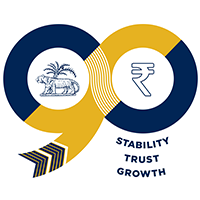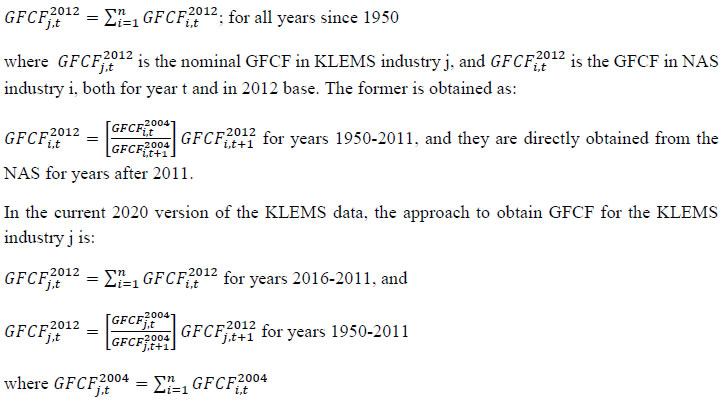Inflation, Money and Credit - 09-08-2024 - PDF Testing - ആർബിഐ - Reserve Bank of India
 IST,
IST,


Inflation, Money and Credit 01 test 01 dummy 012
| Central Board of Director appointed/nominated under RBI Act, 1934 | ||
|---|---|---|
| Section of RBI Act | Sr. No. | Name |
| 8 (1) (a) | 1. | Shri Shaktikanta Das Governor |
| 2. | Dr. M.D. Patra Deputy Governor |
|
| 3. | Shri M. Rajeshwar Rao Deputy Governor |
|
| 4. | Shri T. Rabi Sankar Deputy Governor |
|
| 5. | Shri Swaminathan J Deputy Governor |
|
| 8 (1) (b) | 6. | Ms. Revathy Iyer |
| 7. | Prof. Sachin Chaturvedi | |
| 8 (1) (c) | 8. | Shri Satish Kashinath Marathe |
| 9. | Shri Swaminathan Gurumurthy | |
| 10. | Shri Anand Gopal Mahindra | |
| 11. | Shri Venu Srinivasan | |
| 12. | Shri Pankaj Ramanbhai Patel | |
| 13. | Dr. Ravindra H. Dholakia | |
| 8 (1) (d) | 14. | Shri Ajay Seth |
| 15. | Dr. Vivek Joshi | |
| Address: C/o CGM-in-Charge and Secretary Secretary’s Department Reserve Bank of India 16th floor, Central Office Building Shahid Bhagat Singh Marg Mumbai – 400 001 |
||
| Holiday Name English | Holiday Name Hindi | Holiday Name Tamil | Holiday Name Assamese | Holiday Name Bengali | Holiday Name Gujarati | Holiday Name Kannada | Holiday Name Malayalam | Holiday Name Marathi | Holiday Name Oriya | Holiday Name Punjabi | Holiday Name Telugu | Holiday Name Urdu |
| Uttarayana Punyakala, Makara Sankranti Festival |
उत्तरायण पुण्यकाल, मकर संक्रांति महोत्सव
|
உத்தராயானா புன்யாகாலா, மகரா சங்க்ராந்தி திருவிழா
|
উত্তৰায়ণ পুণ্যকলা, মকৰ সংক্ৰান্তি উৎসৱ | উত্তরায়ণ পুণ্যকালা, মকরা সংক্রান্তি উৎসব |
ઉત્તરાયાણ પુણ્યકાલા, મકરા સંક્રાંતિ ઉત્સવ
|
ಉತ್ತರಾಯಣ ಪುಣ್ಯಕಾಲ, ಮಕರ ಸಂಕ್ರಾಂತಿ ಉತ್ಸವ
|
ഉത്തരായണ പുണ്യകാല, മകര സംക്രാന്തി ഫെസ്റ്റിവൽ
|
उत्तरायाना पुण्यकाळा, मकरा संक्रांती उत्सव
|
ଉତ୍ତରାୟଣ ପୁଣ୍ୟକାଳ, ମକର ସଂକ୍ରାନ୍ତି ମହୋତ୍ସବ
|
ਉੱਤਰਾਯਾਣਾ ਪੁਨਯਾਕਾਲਾ, ਮਕਰਾ ਸੰਕਰਾਂਤੀ ਤਿਉਹਾਰ
|
ఉత్తరాయణ పుణ్యకాల, మకర సంక్రాంతి ఉత్సవం
|
اترایانا پونیکالا, مکارا سنکرانتی تہوار
|
| Republic Day |
गणतंत्र दिवस
|
குடியரசு தினம்
|
প্ৰজাতন্ত্ৰ দিৱস | গণতন্ত্র দিবস |
ગણતંત્ર દિવસ
|
ಗಣರಾಜ್ಯೋತ್ಸವ ದಿನ
|
റിപ്പബ്ലിക്ക് ദിനം
|
प्रजासत्ताक दिन
|
ଗଣତନ୍ତ୍ର ଦିବସ
|
ਗਣਤੰਤਰ ਦਿਵਸ
|
రిపబ్లిక్ డే
|
یوم جمہوریہ
|
| Maha Shivaratri |
महाशिवरात्रि
|
மகாஷிவ்ராத்திரி
|
মহাশিৱৰাত্ৰি | মহাশিবরাত্রি |
મહાશિવરાત્રી
|
ಮಹಾಶಿವರಾತ್ರ
|
മഹാശിവരാത്രി
|
महाशिवरात्री
|
ମହାଶିବରାତ୍ରି
|
ਮਹਾਸ਼ਿਵਰਾਤਰੀ
|
మహాశివరాత్రి
|
مہاشوراتری
|
| Ugadi Festival |
गुढ़ी पड़वा / उगादि त्योहार / तेलगु नव वर्ष दिवस / सजिबू नोंगमापनबा (चीरोबा) / पहला नवरात्र
|
குதி பட்வா/உகாடி திருவிழா/தெலுங்கு புத்தாண்டு நாள்/சஜிபு நாங்கமபன்பா (செய்ரோபா)/முதல் நவராத்திரா
|
গুঢ়ি পড়ৱা/উগাড়ি উৎসৱ/তেলুগু নৱবৰ্ষ দিৱস/ছাজিবু নংমাপানবা (চেইৰাওবা)/প্ৰথম নৱৰাত্ৰি | গুধি পাডওয়া/উগাদি উৎসব/তেলুগু নিউ ইয়ার্স ডে/সাজিবু নঙ্গমাপানবা (চেইরাওবা)/প্রথম নবরাত্রি |
ગુધી પડવા/ઉગાડી ઉત્સવ/તેલુગુ નવા વર્ષનો દિવસ/સાજીબુ નોંગમપણબા (ચેઇરાઓબા)/પહેલો નવરાત્રા
|
ಗುಧಿ ಪಡ್ವಾ/ಉಗಾಡಿ ಫೆಸ್ಟಿವಲ್/ತೆಲುಗು ನ್ಯೂ ಇಯರ್ಸ್ ಡೇ/ಸಾಜಿಬು ನಂಗಮಪನ್ಬಾ (ಚೆರಾವ್ಬಾ)/ಮೊದಲನೇ ನವರಾತ್ರ
|
ഗുധി പഡ്വ/ഉഗാദി ഫെസ്റ്റിവൽ/തെലുഗു ന്യൂ ഇയേർസ് ഡേ/സാജിബു നോങ്മപാൻബ (ചെയ്രോബ)/ആദ്യ നവരാത്ര
|
गुधी पडवा/उगाडी फेस्टिव्हल/तेलुगू न्यू इअर्स डे/साजिबू नोंगमपणबा (चेइरावबा)/पहिला नवरात्रा
|
ଗୁଡ଼ି ପଡୱା/ଉଗଦି ଫେଷ୍ଟିଭାଲ/ତେଲୁଗୁ ନୂଆ ବର୍ଷର ଦିବସ/ସାଜିବୁ ନୋଙ୍ଗମାପନବା (ଚେଇରାଓବା)/ପ୍ରଥମ ନବରାତ୍ରି
|
ਗੁਧੀ ਪੜਵਾ/ਉਗਦੀ ਤਿਉਹਾਰ/ਤੇਲੁਗੂ ਨਿਊ ਈਅਰ'ਸ ਡੇ/ਸਾਜੀਬੁ ਨੋਂਗਮਪੰਬਾ (ਚੇਰਾਓਬਾ)/ਪਹਿਲਾ ਨਵਰਾਤਰਾ
|
గుధి పడ్వా/ఉగడి ఫెస్టివల్/తెలుగు న్యూ ఇయర్స్ డే/సాజిబు నోంగ్మపన్బా (చెయిరోబా)/ మొదటి నవరాత్ర
|
گودھی پاڈو/یوگاڈی فیسٹیول/تیلگو نئے سال کا دن/ساجیبو نونگماپنبا (چیراوبا)/پہلا نوراترا
|
| Khutub-E-Ramzan |
कुतुब-ए-रमज़ान
|
குதுப்-இ-ரம்ஜான்
|
খুতুব-ই-ৰমজান
|
খুতুব-ই-রমজান
|
ખુતુબ-ઇ-રમઝાન
|
ಖುತುಬ್-ಇ-ರಂಜಾನ್
|
ഖുതുബ്-ഇ-റംസാൻ
|
खुतुब-ए-रमजान
|
ଖୁଟୁବ-ଇ-ରମଜାନ୍
|
ਖੁਤੂਬ-ਏ-ਰਮਜ਼ਾਨ
|
ఖుతుబ్-ఇ-రంజాన్
|
خطوبِ رمضان
|
|
Chapter 2: Gross Value-Added Series at the Industry Level This chapter describes the data sources and methodology used to construct the Gross Value Added (GVA) series at current and constant prices for 27 study industries for the period of 1980-81 (1980) to 2021-22(2021). The National Accounts Statistics (NAS) brought out by the NSO (National Statistics Office, Government of India) is the basic source of data for the construction of series on gross value added for INDIA KLEMS-industries. Up to 2011-12, estimates of GVA at both current and constant (2011-12) prices for all industries are obtained from Back Series of National Accounts (Base 2011-12). For years after 2011-12, they are directly obtained from NAS 2023. However, NAS estimates of value added are not available for a few India KLEMS industry groups. Therefore, we had to split some of the aggregate industry groups from NAS. Maintaining consistency with NAS, the value-added data in India KLEMS is measured at basic price. The construction of Gross valued added series involves three steps. Step 1: A concordance table between the classification used in the NAS and the 27 study industry classification used for this project has been prepared. Further, concordance between all the 27 sectors has been constructed with NIC- 1970, 1987, 1998, 2004 and 2008. Out of the 27 study industries, for 20 industries, GVA series both in current and constant prices is directly taken from NAS1. The sectors for which data are provided in NAS are Agriculture, Forestry & logging, Fishing, Mining and Quarrying, Manufacturing, Electricity, gas and water supply, Construction, Trade, Hotels & Restaurants, Railways, Transport by other means, Storage, Communication, Banking & insurance, Real estate, Ownership of Dwelling & Business Services, Public Administration & Defense and Other Services. Step 2: For manufacturing industries where direct estimates of GVA were not available from NAS, estimates have been made using additional information from ASI and NSSO unorganised manufacturing data. In these cases, GVA data is constructed by splitting the NAS data using ASI or NSSO distributions. ASI data (annual) has been used for registered and corporate manufacturing, whereas interpolated ratios from NSSO 40th (1984-85), 45th (1989-90), 51st (1994-95), 56th (2000-01), 62nd (2005-06), 67th round (2010-11) and 73rd round (2015-16) rounds have been used for Unregistered and household manufacturing segments. For unregistered manufacturing for years 2015-16 to 2021-22 the ratio obtained from 73rd round of unregistered manufacturing has been used for the splitting. Table 2.1 and Table 2.2 showcase the methodology used to split GVA of certain NAS sectors to match concordance with our classification. It is important to note that the industry-level value-added volume indices are based on NAS. NSO provides single-deflated value-added estimates for all sectors except Agriculture. Step 3: According to India KLEMS, GVA is adjusted for Financial Intermediation Services Indirectly Measured (FISIM). The detailed method of FISM adjustment is provided in earlier versions of the KLEMS manual. Chapter 3: Gross Output Series at the Industry Level This chapter describes the procedures and methodologies used in constructing the database for gross output series at the industry level over the period 1980-81(1980) to 2021-2022(2021). To construct the gross output series at industry level, we use multiple data sources namely National Accounts Statistics, Annual Survey of Industries, NSSO rounds for unorganized manufacturing and Input Output Transaction tables. The data sources and methodology used are documented below: National Accounts Statistics: The NAS is the basic source of data for the construction of time series on the gross output. The NAS back series 2011 with base 2004-05 and NAS 2014 provides estimates of gross output for six disaggregate industries at current and constant prices since 1950-51 till 2011-12. These sectors are Agriculture, Mining and Quarrying, Construction and Manufacturing sectors (Registered and Unregistered Manufacturing). However, the Back Series with base 2011-12, which is the source of GVA in India KLEMS database 2022, does not provide estimates of GVO for most of the industries except for Agriculture, Mining and Quarrying and Construction. For these three industries, GVO data at current and constant prices were directly obtained from Back Series with a base 2011-12. Therefore, for the 1980-81 to 2011-12 period, we estimate the GVO series for the remaining 24 industries at current and constant prices by applying the respective GVO/GVA ratio for current and constant prices obtained from Back Series with base 2004-05 and NAS 2014 to GVA with 2011-12 base. For years since 2011, we have taken the estimates of GVO both at current and constant prices for all industries directly from NAS 2023. (a) Filling procedures of National Accounts series: It is to be noted that the NAS estimates of gross output for a few industry groups are at a more aggregate level, requiring splitting of the aggregates. In such cases, NAS estimates of output have been split using additional information from the Annual Survey of Industries and NSSO rounds of Unregistered Manufacturing to obtain estimates at a higher level of disaggregation. Secondly, for Unregistered manufacturing, gross output data is available in NAS from 2004-05 onwards. In this case, information from NSSO survey rounds has been used for missing years to derive output estimates of unregistered manufacturing industries at current and constant prices. As mentioned earlier, for the gross value-added series of service sectors, we obtain our estimates from NAS. However, prior to 2011-12, National Accounts did not provide any estimates of the gross output of service sectors and hence we rely on Input output transaction tables ( from which the ratio of gross to value added is computed which is then applied to GVA reported in NAS) which are available at an interval of 5 years or so. This necessitates interpolation and assumption of constant shares for measuring output of services sectors. The Input Output Transaction Tables for Benchmark years of 1978-79, 1983-84, 1989-90, 1993-94, 1998-99, 2003-04 and 2007-08 are used to derive gross output series for service sectors. The construction of the gross output series at current and constant prices involves the following steps: Step 1: Measuring Gross Output of Agricultural Sector, Mining and Quarrying, and Construction NAS provides nominal and real GVO series for a) Crops and Plantation, b) Animal Husbandry c) Forestry and Logging d) Fishing. By aggregating the GVO of these four subsectors we derive the GVO of Agricultural sector. The Gross output estimates of Mining and Quarrying and Construction at current and constant prices from 1980-2022 is also directly taken from NAS. Step 2: Measuring Gross Output of Manufacturing Industries Since 2011-12, gross output data for 7 out of 13 manufacturing industries listed in table 3.1 are directly picked up from NAS. For the remaining 6 sectors output is constructed by splitting the NAS output data using ASI or NSSO distributions. ASI data (annual) has been used for registered manufacturing whereas interpolated ratios from 67th (2010-11) and 73rd (2015-16) rounds have been used for Unregistered Manufacturing segments. A list of study industries is presented in Table 3.2 showcasing the methodology used to split GVO of certain NAS sectors to match concordance with our classification for the year 2011 to 2022. Step 3: Measuring Gross Output for Services Sectors and Electricity, Gas and water supply Since 2011 -12 NAS provided estimates of GVO at current and constant prices. Prior to 2011-12 Gross Output series for Services sectors and sector Electricity, Gas and Water supply have been constructed using information from Input – Output Transaction Tables of the Indian economy published by CSO. The details method of construction of GVO back series for services is provided in earlier versions of KLEMS Data manual.
|
പേജ് അവസാനം അപ്ഡേറ്റ് ചെയ്തത്: null



















